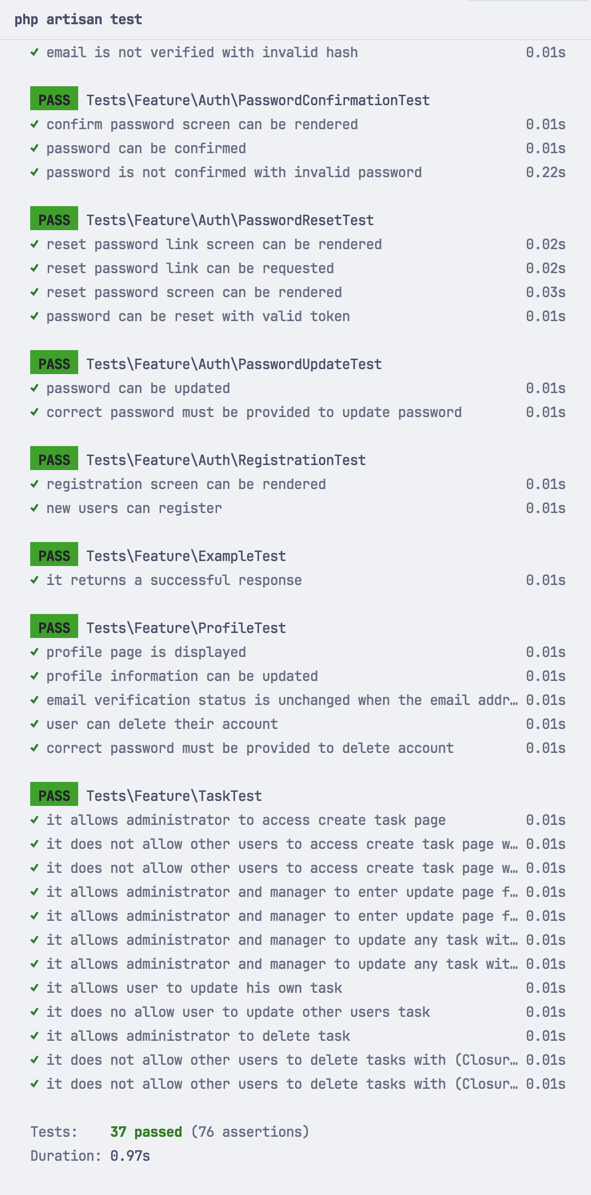Video Version of the Lesson
[Only for premium members]
"Back to School" Campaign! Only until September 14th: coupon SCHOOL25 for 40% off Yearly/Lifetime membership!
Read more here[Only for premium members]
[Only for premium members]
In the first lessons, we relied on the users.is_admin column to define permissions. But what if there are more than two roles? Then you probably need to create a separate DB table, roles, and add a users.role_id column with a foreign key. This is precisely what we will cover in this lesson.
Imagine we have three roles:
As usual, by the end of the lesson we will have a repository with automated tests, including the ones from default Laravel Breeze:

We will continue on the example of the last lesson, where the main logic is inside of TaskPolicy. By the end of this lesson, we will change the conditions here. Our starting point is this:
app/Policies/TaskPolicy.php
class TaskPolicy{ public function create(User $user): bool { return true; } public function update(User $user, Task $task): bool { return $user->is_admin || $task->user_id === $user->id; } public function delete(User $user, Task $task): bool { return $user->is_admin || $task->user_id === $user->id; }}Let's change that $user->is_admin to something more flexible.
Migration
Schema::create('roles', function (Blueprint $table) { $table->id(); $table->string('name'); $table->timestamps();});app/Models/Role.php
class Role extends Model{ use HasFactory; protected $fillable = ['name'];}database/seeders/RoleSeeder.php
use App\Models\Role; // ... class RoleSeeder extends Seeder{ /** * Run the database seeds. */ public function run(): void { Role::create(['name' => 'User']); Role::create(['name' => 'Administrator']); Role::create(['name' => 'Manager']); }}And, of course, call the seeder:
database/seeders/DatabaseSeeder.php
class DatabaseSeeder extends Seeder{ /** * Seed the application's database. */ public function run(): void { $this->call(RoleSeeder::class); }}Then, we add a foreign key with...